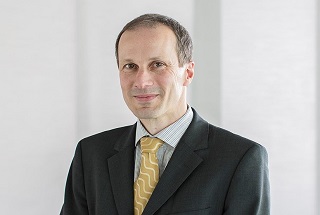"Light always offers exciting challenges"

What were the most important developments for the Fraunhofer AWZ Soest in 2023?
In 2023, we were able to intensify our collaboration with HELLA (FORVIA Group), both in the field of thermal evaluation of headlights and in the optical characterization of the materials used. The cooperation with the Federal Institute for Materials Testing (BAM) and the company SCHOTT is also progressing very successfully. A standard for determining external luminescence quantum efficiency is being developed in a joint project. We have also been able to expand our research on light converters to the field of mechanical characterization. This enables us to develop efficient light converters that can withstand high mechanical loads and can therefore be used more sustainably.
Fraunhofer customers can literally "be enlightened" through cooperation with the Application Center. Who are your cooperation partners and what services do you offer?
Our customers mainly come from the lighting industry. We offer them a wide range of services for characterizing their products. This includes not only photometric but also thermal evaluation of components and entire systems. We are also specialists in the development of phosphors.
The image of modern lighting technology has recently been tarnished by the buzzword "light pollution". What technological options do you see to respond to this?
The widespread use of light-emitting diodes (LEDs) and the efficiency gains they have achieved have unfortunately led to a rebound effect: The operating costs are low, which encourages a thoughtless and excessive use. However, LEDs are actually ideal for reducing and preventing light pollution. They make it possible to direct light specifically to where it is needed. One example is sidewalk lighting, which only illuminates the path and does not waste light in the direction of the night sky. In addition to more considered and economical use, intelligent control systems that only switch on as much lighting as is needed can also help to reduce light pollution. The industry is aware of this issue and is working on appropriate solutions.
What are you looking forward to in the new year and what will be a particular challenge in 2024?
We are looking forward to an intensified cooperation with HELLA, SCHOTT and BAM. Joint research proposals are already being prepared for this. As always, I am also very excited about all the new insights that we can gain for our topic from these projects: Although there is already a lot of research in the field of light, surprising findings and therefore new challenges are constantly being added, particularly as a result of constantly improving technology. We must investigate these issues and identify the appropriate solutions for our customers. That will certainly be exciting.